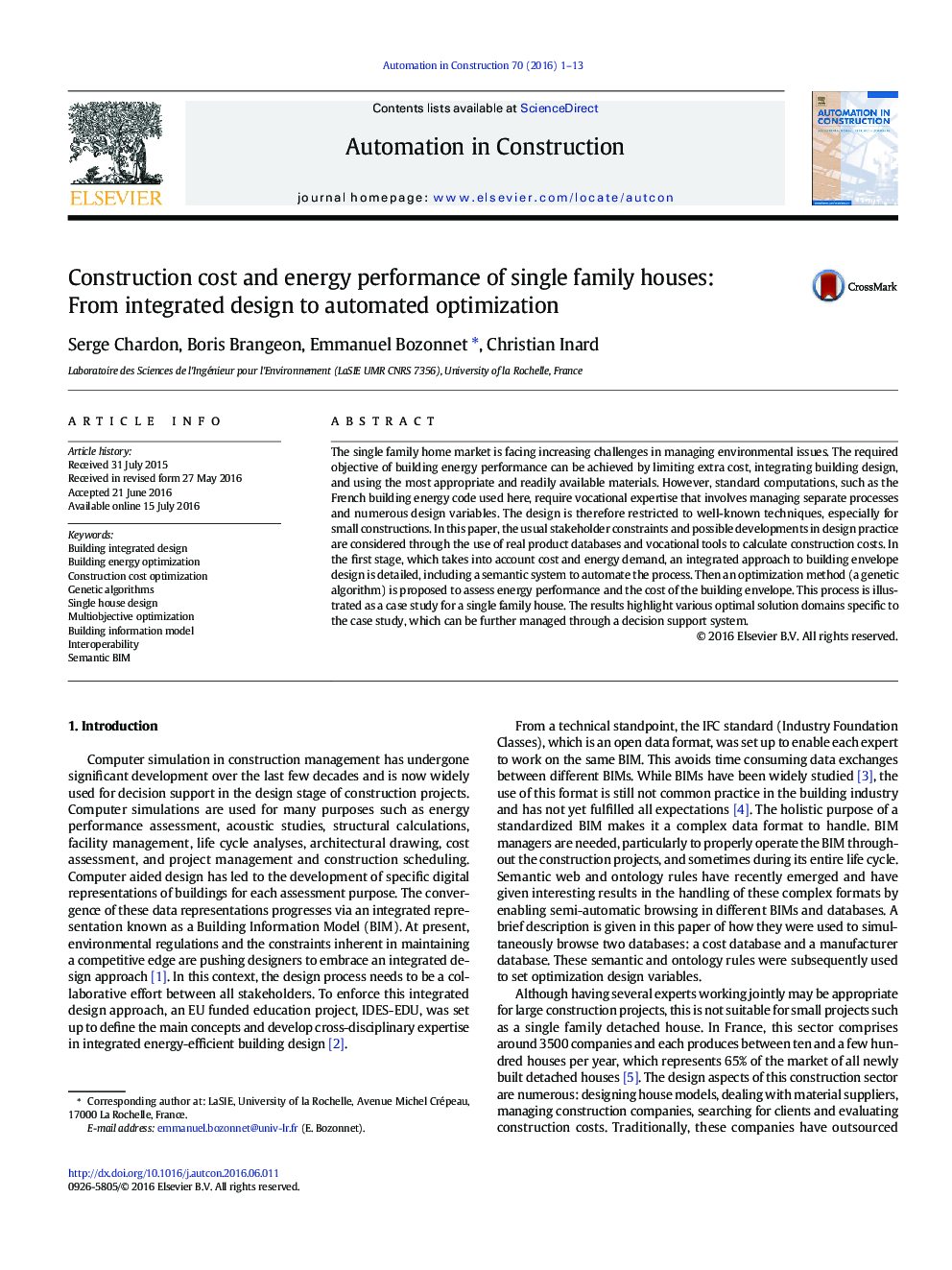| Article ID | Journal | Published Year | Pages | File Type |
|---|---|---|---|---|
| 246199 | Automation in Construction | 2016 | 13 Pages |
•Integrated and optimization design for single houses were examined in a case study.•A vocational tool for construction cost was made interoperable with an energy tool.•Interoperability was developed to automate data selection in construction databases.•Our integrated method includes a genetic optimization process.•In this study, optimum solutions were obtained in 30 min from 72 million possibilities.
The single family home market is facing increasing challenges in managing environmental issues. The required objective of building energy performance can be achieved by limiting extra cost, integrating building design, and using the most appropriate and readily available materials. However, standard computations, such as the French building energy code used here, require vocational expertise that involves managing separate processes and numerous design variables. The design is therefore restricted to well-known techniques, especially for small constructions. In this paper, the usual stakeholder constraints and possible developments in design practice are considered through the use of real product databases and vocational tools to calculate construction costs. In the first stage, which takes into account cost and energy demand, an integrated approach to building envelope design is detailed, including a semantic system to automate the process. Then an optimization method (a genetic algorithm) is proposed to assess energy performance and the cost of the building envelope. This process is illustrated as a case study for a single family house. The results highlight various optimal solution domains specific to the case study, which can be further managed through a decision support system.
